Are you a Quiet Speculation member?
If not, now is a perfect time to join up! Our powerful tools, breaking-news analysis, and exclusive Discord channel will make sure you stay up to date and ahead of the curve.
Hello, everyone.
Last week, we went through a few Modern- and Standard-legal lands. This week, let's discuss a number of cards that have been good in the Modern metagame in the past but are currently underplayed – I call them "forgotten" cards.
Modern Hexproof Auras
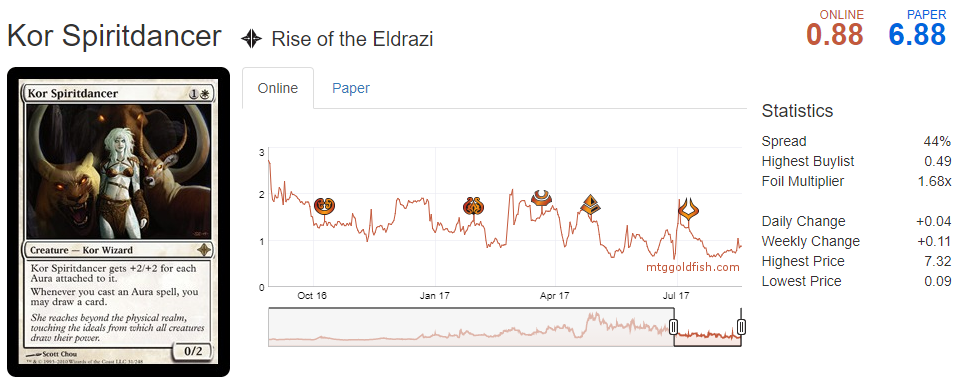
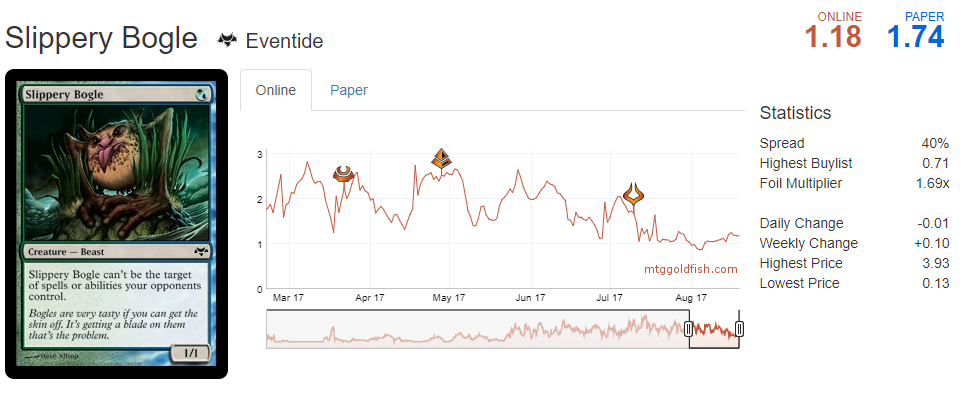
These are the main creatures in Modern Green-White Hexproof Auras, and both are currently at their respective low points. These cards tend to go up in price when G/W Auras is good in the metagame, and occasionally, the Bogles will increase in price due to the Pauper format. This deck will be good when there are a bunch of midrange decks running around in the field, as spot removal is totally useless against it. I think Kor Spiritdancer will take a longer time than Bogles to grow in value, but both of them will definitely earn us some tickets one day.
- Kor Spiritdancer: Current Buy Price: 0.9; Target Sell Price: 2; Profit per Copy: 1.1
- Slippery Bogle: Current Buy Price: 1.2; Target Sell Price 2.5; Profit per Copy: 1.3
Modern Jund
Jund is my personal favorite. It's always playable and has a pretty even matchup against everything else in the format. Ever since WotC reduced the number of 5-0 decks posted online everyday, we barely see any Jund lists appear. However, there are a lot of great players like Reid Duke and Willy Edel that will occasionally bring out this deck again and top eight or 5-0 some events. When that happens, some of the pieces in Jund will spike. Here's the most likely candidates:
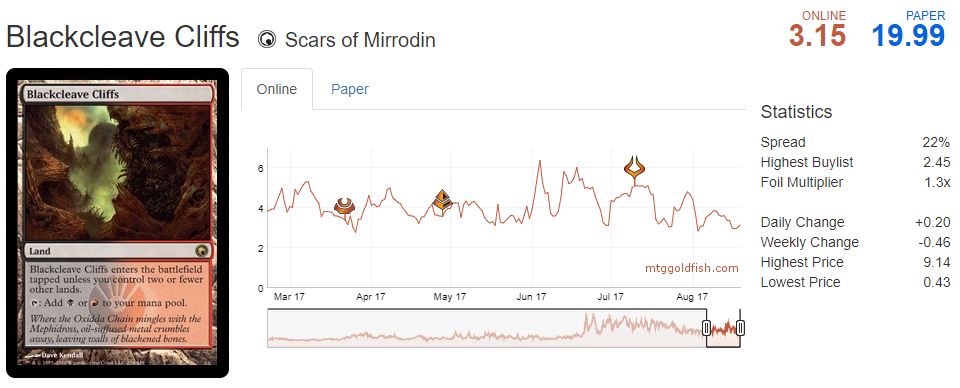
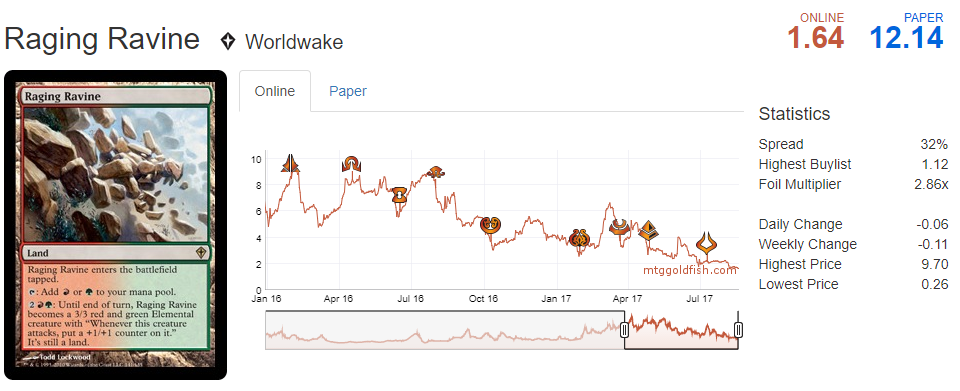
Last week, I discussed some Standard legal fast-lands. If you played along at home with my picks, I hope you've already sold off your Botanical Sanctums for about 1.2 tickets profit each, as they stopped growing somewhere around 3.8 tickets in the last few days.
The main thing I want to illustrate here is that lands are some of the best investments on MTGO. Blackcleave Cliffs and Raging Ravine are staples in Modern Jund and have been for a long time. Currently the demand for these two cards is extremely low, so I suggest you get a couple playsets of each to be prepared for Jund's inevitable resurfacing in the format.
- Blackcleave Cliffs: Current Buy Price: 3.2; Target Sell Price: 5; Profit per Copy: 1.8
- Raging Ravine: Current Buy Price: 1.65; Target Sell Price: 4; Profit per Copy: 2.35
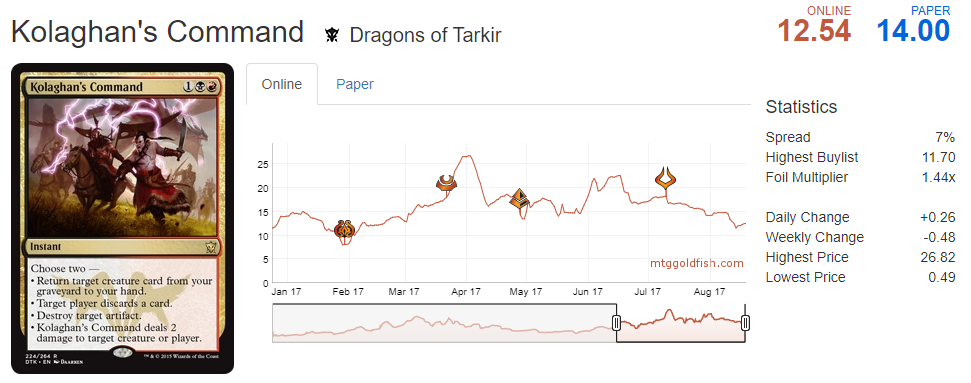
This is one of the best two-for-one card ever printed for Jund or Grixis decks. Since January this year, K-Command has reached 15 tix multiple times, with at least two to three points among them at above 20 tickets. With the current price at 12.5 tickets, I think this card has the potential to go up to at least 15 to 17 tickets again soon.
- Kolaghan's Command: Current Buy Price: 12.5; Target Sell Price: 17; Profit per Copy: 4.5
Modern Blue Control Decks
There are a few different blue control builds that performed well recently on MTGO. Obviously, all of them play Snapcaster Mages and Cryptic Commands in their 75. This week, I'm looking at two blue cards that I might want to add to my long-term specs binder.
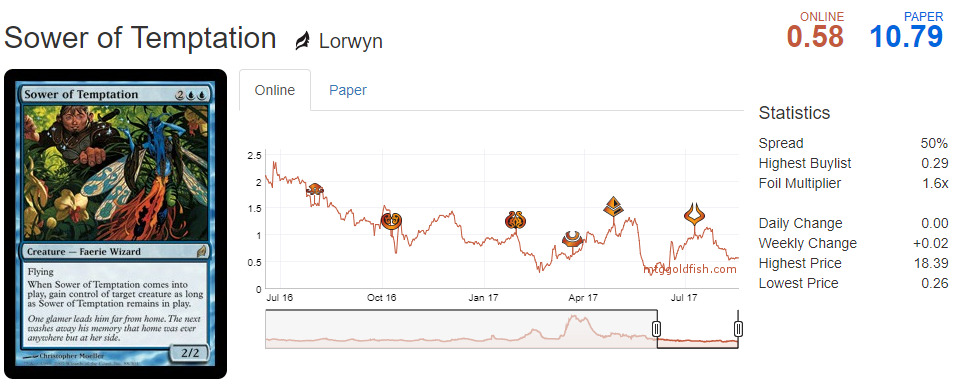
Sower of Temptation is a great sideboard card for many blue-based control lists, especially when the metagame is full of decks that plays Tarmogoyfs and Siege Rhinos. Sower has reached multiple low points this year, but it somehow always go back up above 1 ticket. I understand that if we buy them now and resell at 1 ticket, we pretty much earned nothing, but I have a different strategy in mind: a long-term investment where we aim for 5 tix per copy. If this card becomes popular in Modern again, it could easily reach this price point.
- Sower of Temptation: Current Buy Price: 0.6; Target Sell Price: 5; Profit per Copy: 4.4
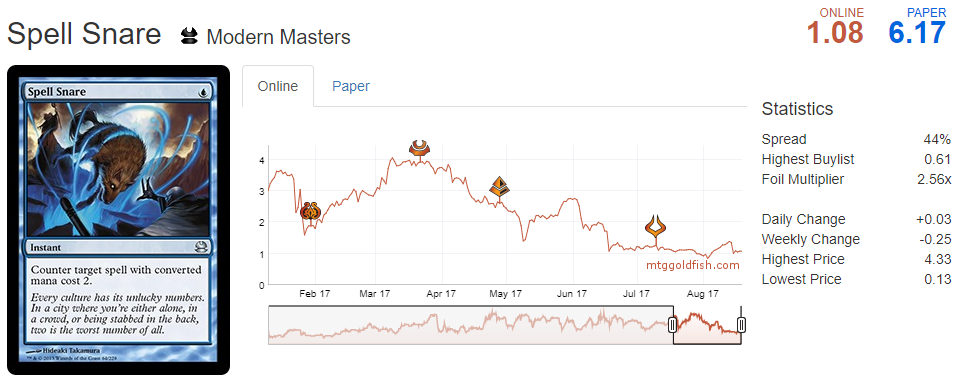
Spell Snare became less popular since mid-June of this year, probably because Death's Shadow took over Tarmogoyf's place as the best creature in the format. However, I think this is not permanent, as Modern is a very huge format where any card can be good. When the metagame is full of two-drops again, it will be the time for Spell Snare to shine.
- Spell Snare: Current Buy Price: 1.1; Target Sell Price: 3; Profit per Copy: 1.9
GriShoalBrand
Last week, Belgium's Jérôme Bastogne finished 9-0 at Grand Prix Birmingham with a similar GriShoalbrand list that he piloted to a second-place finish at the World Magic Cup 2016. I believe the live stream alone made the prices of Through the Breach and Nourishing Shoal increase on MTGO:
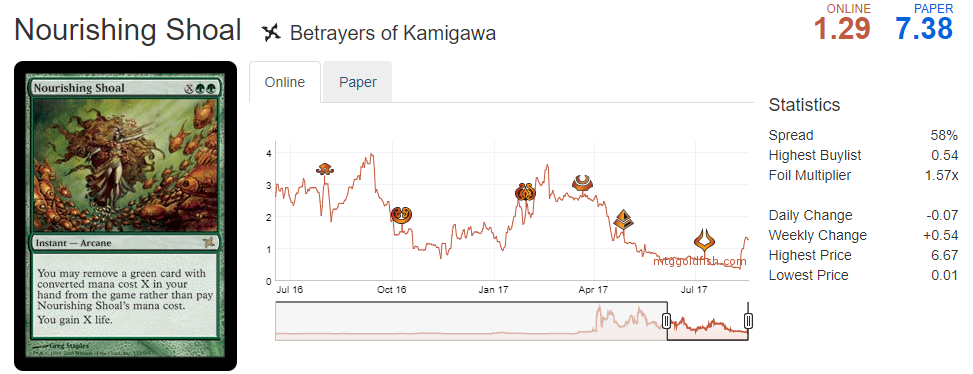
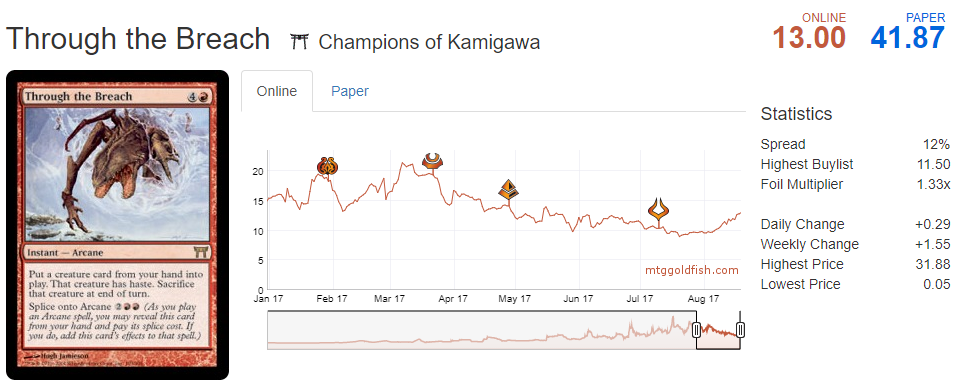
I'm not sure what's going to happen with Nourishing Shoal, but the price of Through the Breach has been increasing steadily for the past week. The card is not only seen in GriShoalBrand but many other decks that wants to cheat some hasty Primeval Titans and Emrakuls into play. I think its safe to buy in two to three playsets of Through the Breach while its below 15 tickets.
- Through the Breach: Current Buy Price: 13; Target Sell Price: 18; Profit per Copy: 5
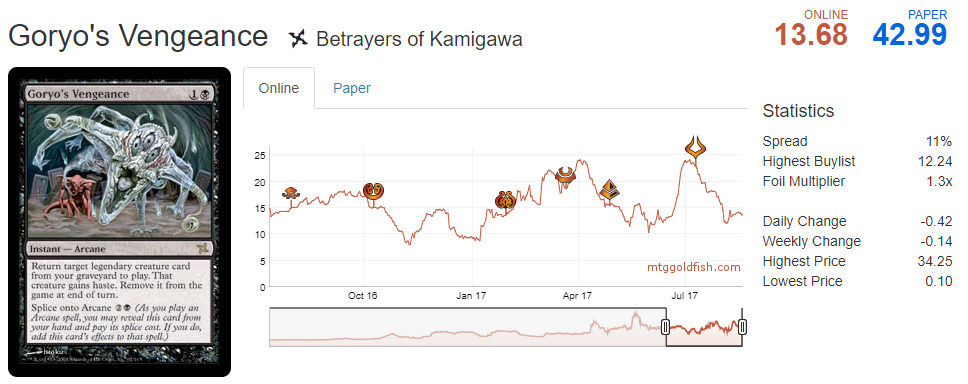
The last time we saw Goryo's Vengeance spike was during the Esper Gifts deck hype. Here's the decklist if you haven't seen it:
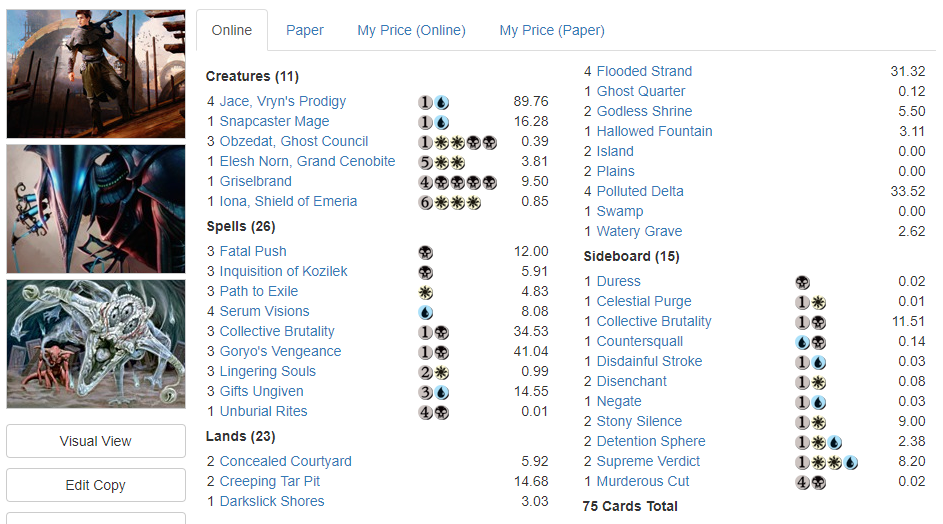
Reanimation is one of the best ways to cheat in big, unstoppable creatures in Magic. Players are actively brewing and testing new builds online, so it's very likely for an improved version of GriShoalBrand or another Goryo's Vengeance deck to hit the metagame again in the near future. At 14 tickets, I think this is a safe investment.
- Goryo's Vengeance: Current Buy Price: 14; Target Sell Price: 20; Profit per Copy
What to Do with Past Standard Specs That Didn't Work Out
It's normal when some of our speculations do not work out. This usually happens when a Standard rotation is about to take place. In this case, we have two general choices:
- Sell the card at a loss, liquidating some amount of resources for new specs.
- Keep the cards and wait, offering less liquidity but giving the chance the cards will pay off in the long-run.
Usually, the reason we sell our failed specs is to stop the bleed immediately, and mostly because we believe that the card no longer has any potential to go up in price. This week, I want to share with you all a third option when our specs don't work out. First let's look at the two cards below:
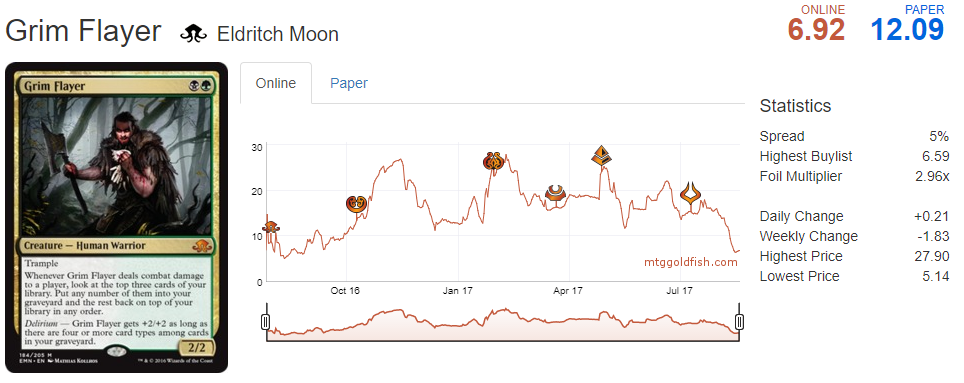
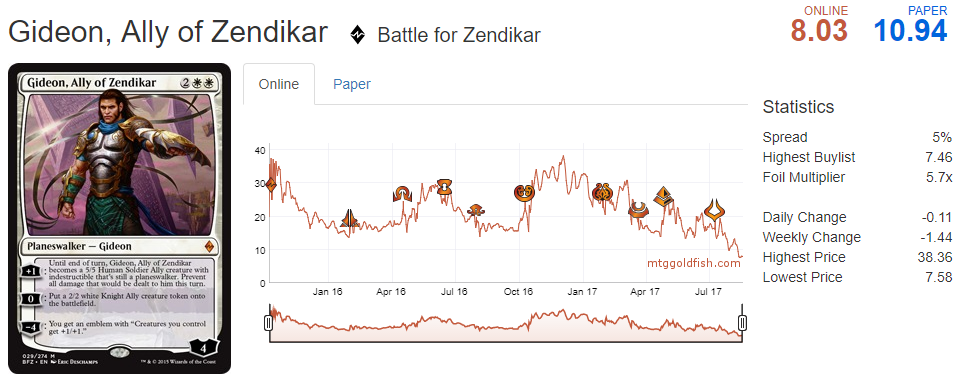
If these are still in your binder, this segment of the article is for you. Here's how the third option going to work:
Let me set a scene for you.
Gideon bought four copies of Grim Flayer at 12 tickets each, but the current price is only 7 tickets. If Gideon sells the Flayers, he is going to lose 5 tickets per copy. Gideon believes that Grim Flayer is not going to go above 12 tickets again, but he does believe it's possible it will see 10 tickets at some point based on its Modern playability.
So he bought another eight copies of Flayers at 7 tickets each (the current price), making the average price per copy becomes 8.67 tix. [ (12 x 4 + 7 x 8)/12 = 8.67 ]
When Grim Flayer does increase to 10 tickets per piece, Gideon will earn 1.33 tickets per copy instead of losing 5 tickets per copy. (If Gideon kept the four Flayers until they increased to 10 tickets each without buying additional copies, ne would still be losing 2 tickets per copy.
Now, I'm not sure if this method is new, or if many of you have been using it, but if you think what I said made sense, you can give it a try! Technically, this can potentially turn "minimize loses" into "small profit".
That's all for this week. Thanks for reading, and I'll see you next week!
Adrian, signing out


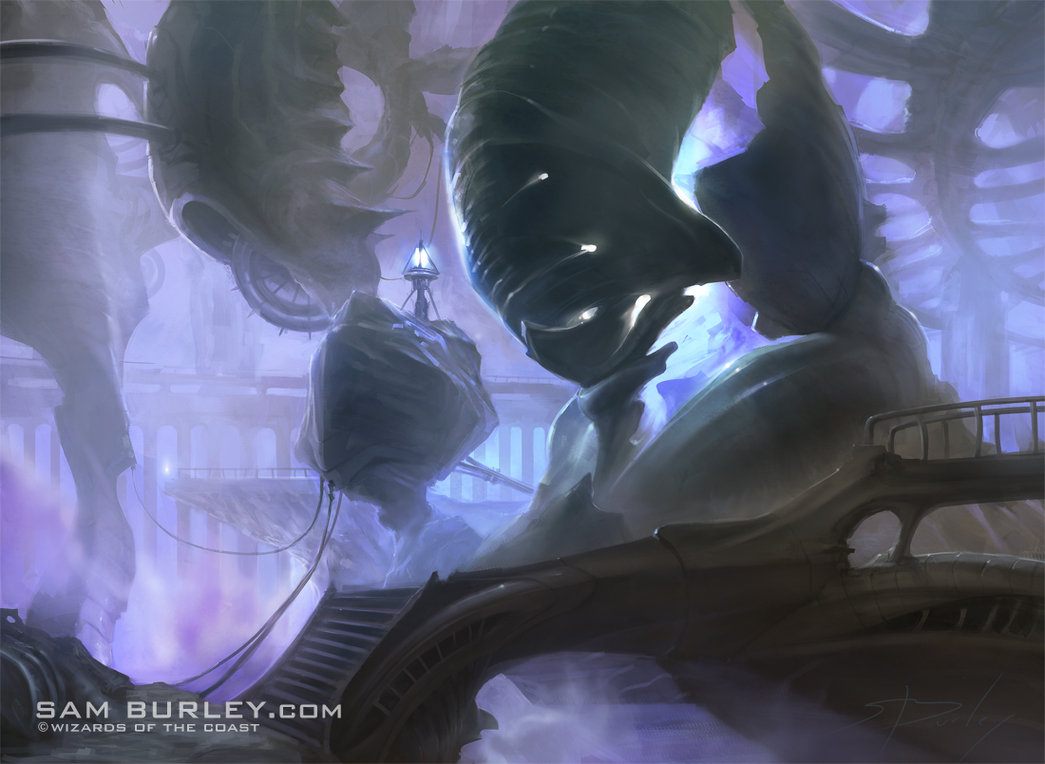



Hi Adrian, nice article but I have to disagree with your final point. When you are buying an asset that is declining in price, it’s commonly referred to as ‘averaging down’ in IRL finance. Although it can be appealing psychologically, I think it’s a mistake to try this out. You could have been averaging down on Gideon since Aether Revolt was released, buying the dips and looking for a price target that always turned out to be out of reach. If you had pursued this strategy, you would have ended up turning a small loss into a big one.
Now, I think it’s ok to spread your buys out, but I think it’s a lot safer to have a buying and selling window in mind first. Cards that are rotating out of Standard are off my buy list in late spring, early summer, but I’ll start looking at them in August and September, for instance. I might not hit the exact bottom, but I tend to be approximately right and this way I won’t be stuck averaging down on cards I bought in July, for instance.
Although perhaps impossible to do in practice, I think it is best to not allow emotion – or the desire to not lose any money on every one of your specs – to inform your investment decisions. In the example you discuss, I don’t think that a desire to turn a $2 loss into a $1 profit should inform your investment decision in this case. You should speculate on the new Grim Flayers if you think that you’ll make money on them and believe that that money is an efficacious use of your time and resources.
For example, I’ll share a story about when I did something similar, with pretty good intentions. I had bought about 12 Relentless Deads when they were $3 early on in its Standard life. It withered down to $1-$2, and I never sold them because I had such faith that the card was a legit good card. When it was $1 I figured that it was worth buying more of them (and here my intentions *were* good. My mentality was not to turn a loss into a profit like in the Grim Flayer example, but simply a risk-reward calculation that I wanted to buy 12 Relentless Deads at $1 just in case the card really spiked.)
When Relentless dead did spike, I made a grave emotional mistake. I sold right when it became non-negative for me, so I only made $5 on it. Had I been patient and rational, not caring about having a “bad investment”, I would have made $75-$125.
So all this is to say that, like Matt, I wouldn’t want to employ the “method” in your example, but I do think that it is okay if the structure of your example holds true, as it did in my Relentless Dead case. The mentality of “not wanting to lose money on a speculation” did get to me, though, and I missed out on a lot of profit as a result. The example you describe is an interesting one, and no doubt many QS readers have encountered it before.
I also really liked your article because I don’t spend much time looking at older modern cards, and several times over the past year I’ve noticed “Gee, I didn’t know this card was x dollars at this point. I would have bought them had I known!”. Doing your homework really does pay off, that’s for sure! Thanks for sharing your insight
I sold my relentless deads too early as well. Think i had about 20 copies for $2-3. Definitely missed a nice pay by selling too soon…a problem that has plagued me this year.
Great article, I really like a lot of these picks. I’ll be picking up some of these to round my portfolio. Interestingly the mtggoldfish modern staples page is much smaller than it used to be and a lot of these cards get left off.
So im the guy that lost big on Gideon. I thought he had another spike in him before rotation, but that does not look like its going to be true. Ive been selling all my Gideons to free up the capital. Ill look to rebuy some after it has bottomed out.